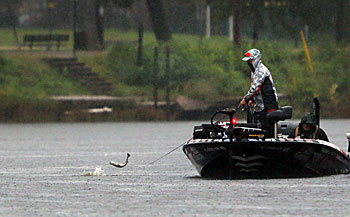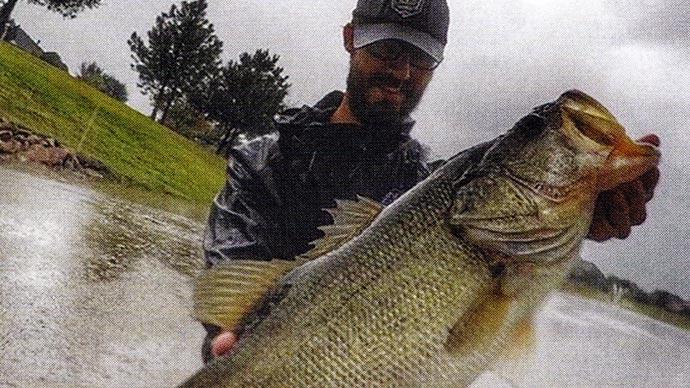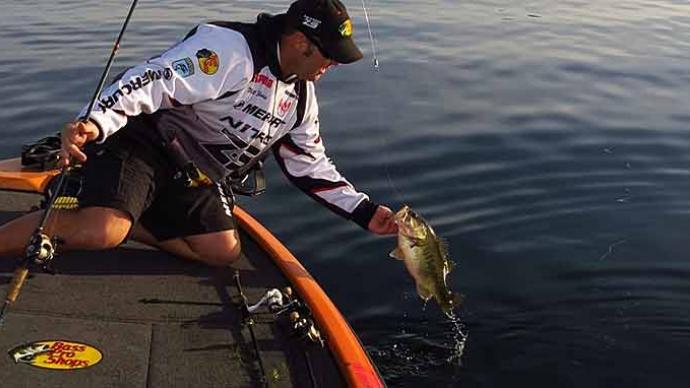
When you go fishing, do you watch the weather before your day on the water? If yes, are you tracking just current weather conditions or looking forward to what you may be faced with when you're fishing?
Let’s talk about the weather, how it can affect your fishing when you're on the water, and how you can still catch fish during changing conditions.
I pay attention to the weather conditions on and off the water. This has come from many years of working on a building facilities team and ensuring that a major Fortune 500 company World Headquarters was open and functioning correctly day in and day out no matter what weather conditions existed.
The weather has been ingrained in my system and has carried over to my fishing as well. If I plan a fishing trip, I check weather conditions the day before I fish and check the morning to make sure nothing has changed. This sets me up for the conditions that I'll face before I even launch my boat in the water.
If I'm fishing a tournament in the upcoming week, I'll pay attention all week to what the weather has in store. I can set up my game plan for pre-fishing and how I'll finalize my tactics come tournament day. If it's forecasted to be windy on tournament day, I'll also have a plan in place to cope with these conditions as well.
Let's break down how fish react to different weather fronts and conditions and how you'll have to adjust to get bass in your boat. The quicker you react to the changing weather conditions, the better your success will be on the water that day.
High-Pressure Cold Front Conditions
These are the days when there are no clouds in the sky, bright sunny days, and high pressure has moved into the area. Wind conditions will play both sides of the spectrum. I have had days when there is no ripple on the water, or the wind can clip 10-20mph from the NW. These are the days you want to be fishing, but when you get on the water, you struggle to catch fish during your day unless you adjust.
Bass will move towards deeper water locations or bury up in cover to hide in the shade. Bass rely on the shade to conceal themselves from prey to ambush them. The brighter sun conditions force the bass to move deeper in the water column or bury up in cover.
To be successful in these conditions, you'll have to get your bait close to the bass to trigger bites. They won't move far to get your bait; you'll have to slow down and pick cover apart slowly and accurately.
High-Pressure Tactics
As fishermen, we fish two distinct types of presentations: vertical and horizontal. A vertical presentation is one that you cast out and let the bait settle to the bottom. Texas rigs and jigs are two examples of vertical presentations. When faced with high-pressure cold front conditions, you'll want to fish a vertical presentation.
Let me also add a drop shot to this category. I can target critical cover pieces and hold my bait in a specific area to trigger strikes from bass that won't move far to pick up baits or strike. Slow down and work key areas thoroughly to get bites. Use your electronics to help you find and pick these areas apart.
I use a Humminbird Mega 360 to help me find areas and look for the cover that I think is holding bass. Once in place, I'll make key casts or pitches to these areas to trigger strikes from bass holding in or next to the cover.
Low-Pressure Conditions - Rain & Storms
These are the days that you can make memories with. Fish will be active and on the feed. For the last two days, you have been dodging storms in and out of a rain suit, but the low-pressure front is due to move through this afternoon and storm.

Pay attention to the weather conditions all day and stay safe, but take full advantage of the active bites that you'll be on. These are some days that I can remember best as the bites you write memories about. I can still see it; you're catching bass on every other cast as you can see the storm approaching across the sky. Then when you finally do pull the plug, it's a race to get back to the landing and get the boat on the trailer before the skies open up and you get soaked.
During low-pressure conditions, bass will be on the move looking for food. They will have the feed bag on. In these conditions, you'll not have to trigger them to bite. You'll just have to get your bait in front of them so they can bite.
Low-Pressure Tactics
When fishing in low-pressure conditions, use a horizontal presentation. Use fast-moving baits - spinnerbaits, crankbaits, topwater, bladed jigs, and traps - anything that you can cast out and reel back to the boat. Your goal here is to cover water. Also, add sound to your presentation. The easier you make for bass to find your bait, the more you'll catch in these conditions. The bass are not looking for a reason not to bite. They know what happens once the front passes. They will have to adjust and bury up in cover and may not feed for the next day or so. They're going to take advantage of these conditions and feed.
If you find a bass school, catch the most active bass with moving baits. But before you leave, throw jigs and Texas rigs into the school area to take the bigger bass that will stay on the fringe and want a slower presentation. In these cases, you often have bigger bass of the school sitting on the fringe, waiting for the scraps that fall from the school activity above. They don't have to exert any effort. They can just sit on the edge of the cover and wait for food to drop to them.
I hope this weather and tactic breakdown will allow you to put more bass in your boat this season. The quicker you can recognize how the weather conditions are affecting the bass bite and make adjustments to these conditions, the quicker you'll be able to put more bass in your boat that day on the water.




